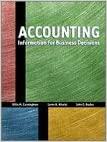
Problem 3 The steel industry produces steel in an energy intensive process by reducing iron ore, or by melting recycled scrap. The market for steel in the EU is perfectly competitive, and we assume that there is no trade with countries outside the EU. The industry consists of many price taking firms that produce steel using one of three types of processes: Basic Oxygen Steelmaking (BOS), Energy Optimization Furnace (EOF), and reprocessing scrap metal using Electric Arc Furnaces (SEAF). All steel factories employ only one process, and all factories using a particular type of process are identical. Their characteristics are described below: Steel making process Average Total daily variable cost ($ fixed cost per unit) (thousands of $ per day) Total daily Daily capacity capital charge of factory (thousands of $ (thousands of per day) units per day) Number of factories BOS 9 6 22 2 60 EOF 5 30 108 3 30 SEAF 14 8 50 2 15 0 Average variable costs are constant for any volume of output up to full capacity operation. 0 Any new factory that might be built would be a BOS factory with cost and operating characteristics identical to BOS factories given in the table above. There is an unlimited number of entrants who could come in to this industry. O Once built, a factory lasts forever, unless it is closed down. A factory has zero salvage value. a. What is the short-run market supply of steel if price is fixed (held constant) at $11 per unit? b. If the average daily price of steel over the long run was expected to be $16 per unit, how much steel would be supplied by incumbent firms in the market? o Henceforth, suppose that market demand on a typical day is given by D(P) = 200 - 10P, where the price P is measured in dollars per unit and the quantity demanded D(P) is measured in thousands of units per day. c. What is the short-run equilibrium price for steel on a typical day in the EU? d. What is the long-run entry price for the steel market in the EU? e) The EU is considering subsidizing steelmakers who use the EOF or SAEF process at $2 per unit of steel. Does this have an impact on the price of steel in the short run? Explain. (Hint: think about how this subsidy impacts producers' cost structures.) Problem 3 The steel industry produces steel in an energy intensive process by reducing iron ore, or by melting recycled scrap. The market for steel in the EU is perfectly competitive, and we assume that there is no trade with countries outside the EU. The industry consists of many price taking firms that produce steel using one of three types of processes: Basic Oxygen Steelmaking (BOS), Energy Optimization Furnace (EOF), and reprocessing scrap metal using Electric Arc Furnaces (SEAF). All steel factories employ only one process, and all factories using a particular type of process are identical. Their characteristics are described below: Steel making process Average Total daily variable cost ($ fixed cost per unit) (thousands of $ per day) Total daily Daily capacity capital charge of factory (thousands of $ (thousands of per day) units per day) Number of factories BOS 9 6 22 2 60 EOF 5 30 108 3 30 SEAF 14 8 50 2 15 0 Average variable costs are constant for any volume of output up to full capacity operation. 0 Any new factory that might be built would be a BOS factory with cost and operating characteristics identical to BOS factories given in the table above. There is an unlimited number of entrants who could come in to this industry. O Once built, a factory lasts forever, unless it is closed down. A factory has zero salvage value. a. What is the short-run market supply of steel if price is fixed (held constant) at $11 per unit? b. If the average daily price of steel over the long run was expected to be $16 per unit, how much steel would be supplied by incumbent firms in the market? o Henceforth, suppose that market demand on a typical day is given by D(P) = 200 - 10P, where the price P is measured in dollars per unit and the quantity demanded D(P) is measured in thousands of units per day. c. What is the short-run equilibrium price for steel on a typical day in the EU? d. What is the long-run entry price for the steel market in the EU? e) The EU is considering subsidizing steelmakers who use the EOF or SAEF process at $2 per unit of steel. Does this have an impact on the price of steel in the short run? Explain. (Hint: think about how this subsidy impacts producers' cost structures.)







